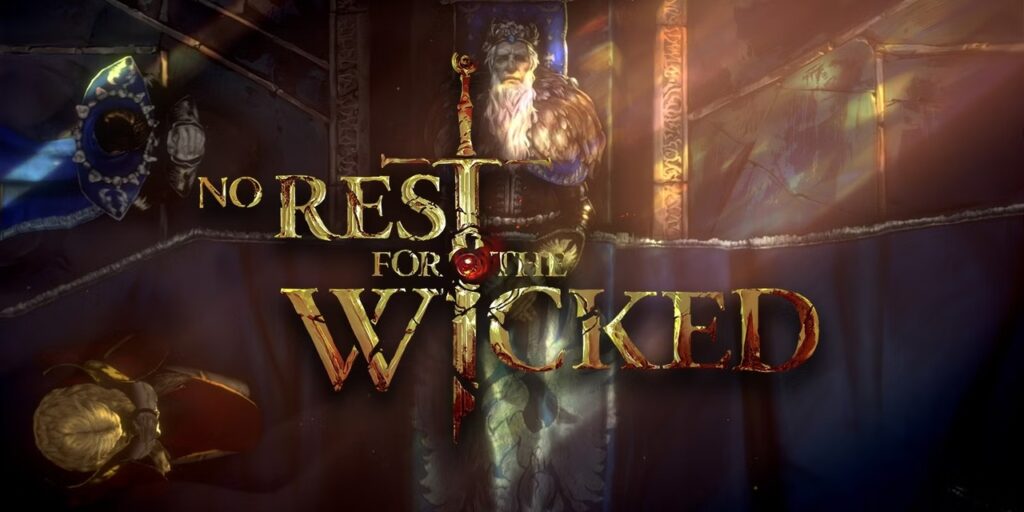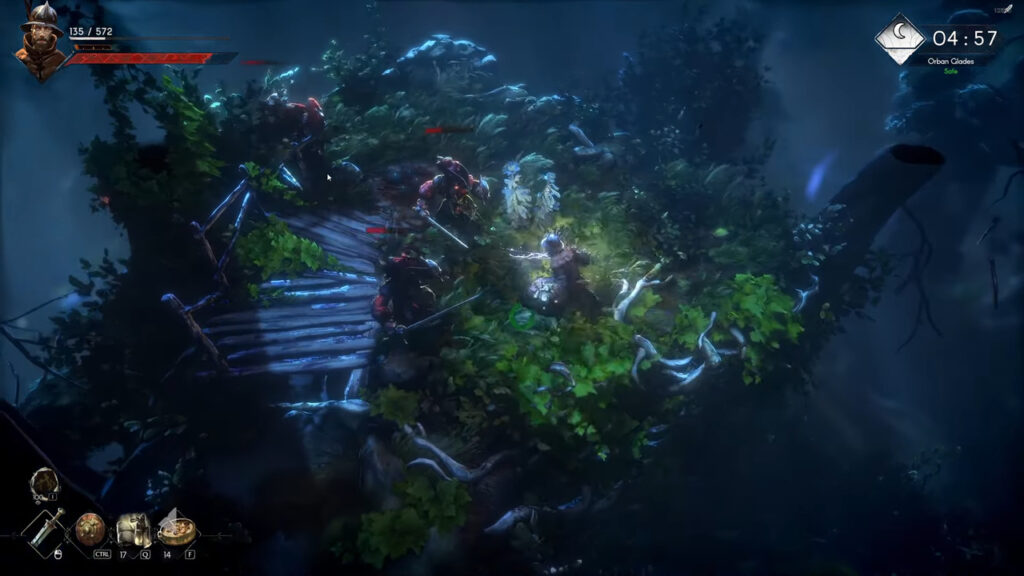
No Rest for the Wicked – Preview
If you’re a seasoned gamer, chances are that the first thing that comes to mind when you hear the phrase ‘No Rest for the Wicked’ is Borderlands’ opening scene. At least for now, because if Moon Studios has anything to say about it, their latest title will soon become top-of-mind instead. No Rest for the Wicked launched in Early Access on Steam a couple of weeks ago, but it has been in development for six years already. It shouldn’t come as a surprise that the game has already garnered a lot of attention, including from ourselves. The developer has built up quite a reputation with its excellent Ori games, but No Rest for the Wicked is something completely different. How does it hold up so far?
On paper, No Rest for the Wicked doesn’t seem all that special yet. The game is an ARPG with Soulslike combat, which is something we’ve seen dozens of times over the last few years. And sure, there is a sense of familiarity present here, although there are also fundamental differences between No Rest for the Wicked and its genre compatriots. The biggest difference is that the game is presented in a top-down isometric fashion. As such, the game feels like it bridges the gap between Dark Souls and Diablo. At the time of writing, a sizable chunk of the game’s main story mode is playable, with modes like PVP and co-op set to be added down the line. Those diving into the story mode will find themselves in the boots of a so-called Cerim, a legendary warrior. A plague has been raging over the land of Sacra, and the king has died. Victims of the plague roam the land as monstrous creatures. Meanwhile, the crown prince is apparently in cahoots with a mysterious religious order that intends to use the plague as an excuse to perform an ethnic cleansing. Naturally, it’s up to you to deal with all the mishaps in Sacra.
Early on, No Rest for the Wicked feels very much like a survival game. After a short tutorial, you end up shipwrecked on Sacra, with your first goal being to reach Sacrament, the nearest city. With no starting equipment to speak of, you’ll have to fend for yourself using whatever you can find along the way. It’s a brutally punishing and difficult way to start the game, and you’ll probably die a couple of times before you even begin to find your footing. Death’s aftermath is one of the first aspects where No Rest for the Wicked diverges from other games in the genre. Any enemies you’ve defeated previously don’t respawn immediately when you die, but neither do resources, although everything does return after enough time passes. Add to this that your weapons’ durability decreases when you die and you start to see why going in with reckless abandon is still a bad idea.
Resource management is a key feature here, as No Rest for the Wicked puts a huge emphasis on gathering items and crafting things from them. Any loot you pick up is randomised too, so especially getting lucky early on can make or break a run. If you manage to scrape by with the scarce resources early on, things eventually start to even out, fortunately. Even at this early stage, crafting plays a huge part, whether it’s cooking meals, which are your primary source of healing, or gathering raw materials used to expand your arsenal of weapons. Once you get to Sacrament, which acts as the game’s hub area, the sky truly is the limit. Initially, it’s a bleak and depressing place, but as you talk to townsfolk and take on quests, you’ll gradually turn it into a bustling location. Eventually, you’ll even be able to buy your own home and furnish it to your liking.
While you can easily get lost in managing your homestead for hours, the main draw here is of course No Rest for the Wicked’s isometric combat. It’s here that the game feels surprisingly reminiscent of Hades. Given how good Supergiant Games’ indie darling was, that’s not a complaint, even if No Rest for the Wicked doesn’t feel particularly innovative in this regard. It shouldn’t come as a surprise then that isn’t a game for the faint-hearted when it comes to combat. Throughout the game, enemies constantly appear to be stronger and faster than you, and you’ll have to earn every victory, especially against bosses. In practice, this translates to parrying and dodging enemy blows and carefully timing your own attacks and engagements. The game is tedious and frustrating at times, but this is by design and it makes every hard-earned victory feel all the more sweet for it. There is an elaborate leveling system in place too, of course, allowing you to hone your personal Cerim into a weapon befitting of your playstyle, although don’t expect to become a death god a la Diablo. Rather than an engine of destruction, your Cerim is poised to be a surgical tool of precision, intent on murdering enemies in the most efficient way possible.
While No Rest for the Wicked is completely different from Moon Studios’ beloved Ori games, both in terms of gameplay and aesthetics, it’s hard to deny that this is a good-looking game. Character designs are deliberately exaggerated, with the art direction opting for style rather than realism. It results in a game that looks hand-painted, and every shot is filled with lavish detail. The downside is that it’s occasionally difficult to make out what is happening on screen, not in the least because of how dark some of the areas in the game are. Seeing things move is often essential to figuring out where enemies are in relation to your Cerim.
The biggest issues No Rest for the Wicked faces right now are how it performs from a technical standpoint, and that it is in need of rebalancing. Admittedly, we tried the game on mid-range hardware, so your mileage may vary when running it with higher specs, and this is of course still an Early Access game. You can tweak the game’s visual settings to improve performance, but even on the lowest setting, stuttering and frame drops were common. As for balance, the current system makes the game outright punish you for performing poorly. If you happen to get stuck against a specific boss, each attempt becomes subsequently more difficult as your weapons and armor break, and eventually, you’ll run out of good gear. It’s a counterintuitive approach, and perhaps something that eventually opens up as we spend more and more time with the game. Or perhaps it’s something that will be overhauled with a future update. We’ll have to wait and see.
Conclusion
Throughout the ten or so hours that are currently available in No Rest for the Wicked’s Early Access version, we found the foundations of a brutally difficult but utterly satisfying ARPG. Right now it’s still a bit of a mashup of elements we’ve seen previously, and it lacks a unique hook to tie everything together, but even then there is plenty here to keep us hooked. We are very much looking forward to seeing what the future brings, both for the story, which cuts off right as things are taking an interesting turn, and for the gameplay.









No Comments